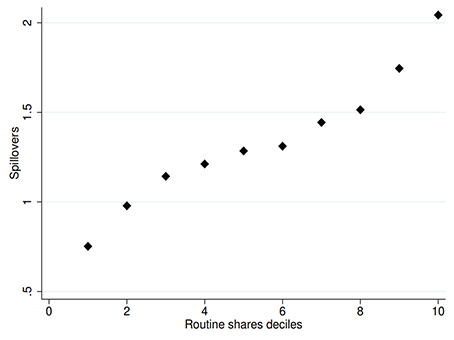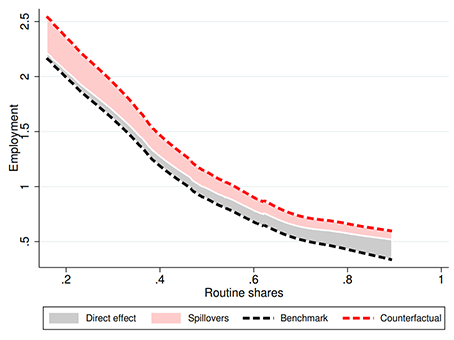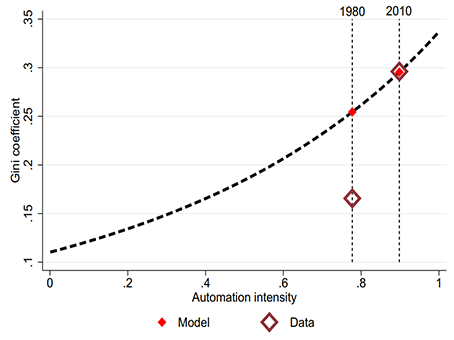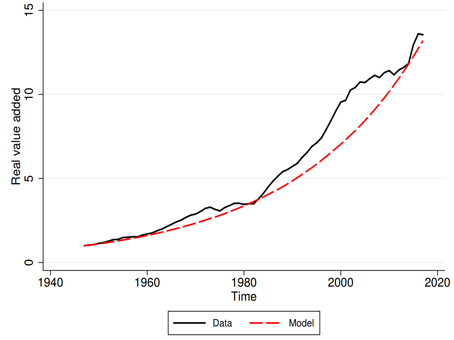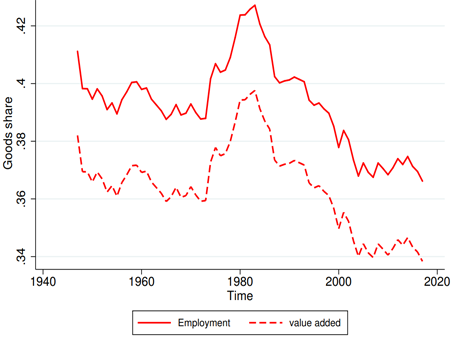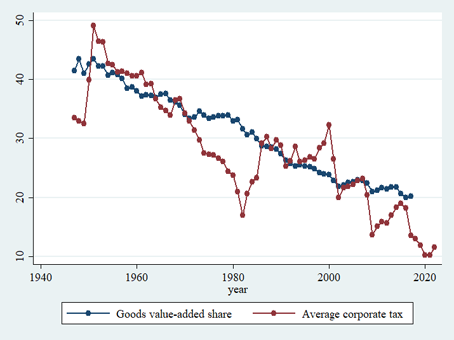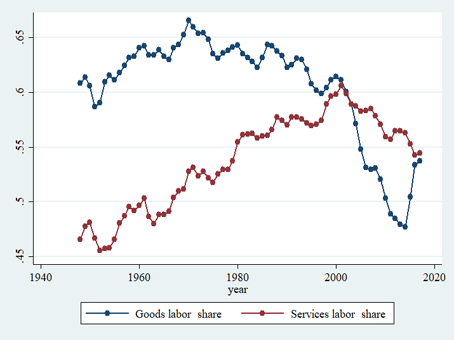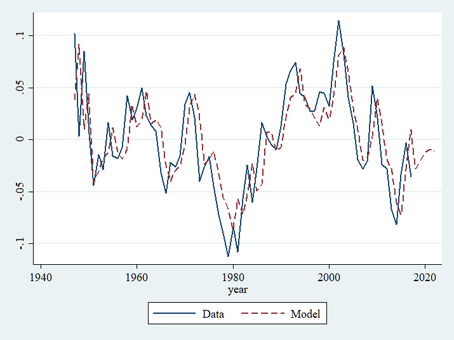Working papers
This paper demonstrates how, through the capital reallocation channel, increased automation in routine occupations has reduced employment and wages in non-routine occupations. Automation in routine occupations absorbs capital from non-routine occupations, reducing employment and wages in the latter. This mechanism is referred to as automation cross occupation spillovers. Between 1980 and 2010, automation reduced average labor income by 27%. Cross-occupation spillover is responsible for 62% of this drop. For example, the increase in automation in the ten percent most routine intensive occupations between 1980 and 2010 reduced average labor income in the 90% least routine intensive occupations by 2.04%. Furthermore, I find that automation has contributed to the rise of inequality in the United States. Indeed, between 1980 and 2010, automation was accountable for 30.3% of the increase in occupational labor income inequality.
This paper reconciles two stylized facts that characterize modern economic growth, balanced growth and structural change, in a context where the factor intensities differ. I extend the neoclassical growth model to two sectors with different factor intensities, and I derive the dynamics of the sectoral TFPs that ensure aggregate balanced growth. I derive the condition on the TFP growth such that balanced growth is consistent with structural change. The condition of balanced growth in a two-sector model with different factor intensities is that the aggregate TFP growth minus the wage growth weighted by the aggregate labor share is constant. In this framework, structural change occurs through two channels. The first is the change in the sectoral TFP ratio and the second is the change in the relative cost of factors. The empirical analysis confirms that the model replicates the stylized facts aforementioned.
The paper shows, both theoretically and empirically, how corporate tax cuts contributed to structural change. For nearly a century, the United States has consistently reduced corporate taxes while maintaining the labor income tax. This shift in tax structure has an uneven impact on goods and services production, contributing to the divergence of sectoral value-added. Indeed, the factor intensity of the goods-producing sector and the service-producing sector differs, thus, changes in corporate taxes affect them differently. A 1% increase in the corporate tax retention rate raises the value-added of the services sector by 0.27 percentage points in comparison to the value-added of the goods sector.
